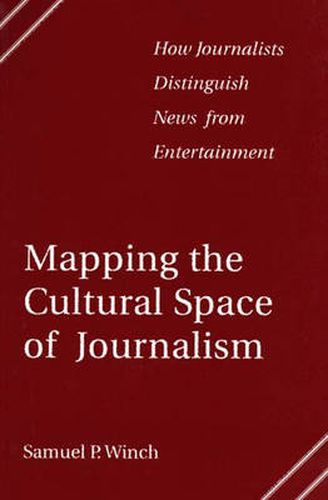Readings Newsletter
Become a Readings Member to make your shopping experience even easier.
Sign in or sign up for free!
You’re not far away from qualifying for FREE standard shipping within Australia
You’ve qualified for FREE standard shipping within Australia
The cart is loading…






Addressing controversial issues of the blurring boundaries between news and entertainment and the movement toward sensationalism in broadcast journalism, this study examines these distinctions: how boundaries are constructed and by whom, how they are enforced or broken and why. Rather than reflecting essential attributes by which news can be distinguished from other kinds of communication, boundary setting is viewed as a social construction, determined and changed by journalists wishing to assert their jurisditiction and authority and the prestige of the profession. Four instances of boundary-work rhetoric are examined in depth: the development of roles and rules of television journalism during the early years of television; attempts at congressional and FTC regulation-broadcasting codes defining bona fide news; responses to a 1992 journalistic scandal over a Dateline NBC story on exploding GM pickup trucks; and reporting sex scandals during recent political campaigns, such as the allegations of Gennifer Flowers of her involvement with Bill Clinton. In these and other cases, journalists developed strategies to minimize harm to the profession.
$9.00 standard shipping within Australia
FREE standard shipping within Australia for orders over $100.00
Express & International shipping calculated at checkout
Addressing controversial issues of the blurring boundaries between news and entertainment and the movement toward sensationalism in broadcast journalism, this study examines these distinctions: how boundaries are constructed and by whom, how they are enforced or broken and why. Rather than reflecting essential attributes by which news can be distinguished from other kinds of communication, boundary setting is viewed as a social construction, determined and changed by journalists wishing to assert their jurisditiction and authority and the prestige of the profession. Four instances of boundary-work rhetoric are examined in depth: the development of roles and rules of television journalism during the early years of television; attempts at congressional and FTC regulation-broadcasting codes defining bona fide news; responses to a 1992 journalistic scandal over a Dateline NBC story on exploding GM pickup trucks; and reporting sex scandals during recent political campaigns, such as the allegations of Gennifer Flowers of her involvement with Bill Clinton. In these and other cases, journalists developed strategies to minimize harm to the profession.